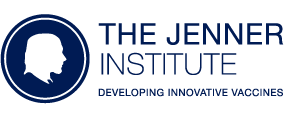Sonication versus Tissue Sampling for Diagnosis of Prosthetic Joint and Other Orthopedic Device-Related Infections
Dudareva M., Barrett L., Figtree M., Scarborough M., Watanabe M., Newnham R., Wallis R., Oakley S., Kendrick B., Stubbs D., McNally MA., Bejon P., Atkins BA., Taylor A., Brent AJ.
<jats:title>ABSTRACT</jats:title> <jats:p>Current guidelines recommend collection of multiple tissue samples for diagnosis of prosthetic joint infections (PJI). Sonication of explanted devices has been proposed as a potentially simpler alternative; however, reported microbiological yield varies. We evaluated sonication for diagnosis of PJI and other orthopedic device-related infections (DRI) at the Oxford Bone Infection Unit between October 2012 and August 2016. We compared the performance of paired tissue and sonication cultures against a “gold standard” of published clinical and composite clinical and microbiological definitions of infection. We analyzed explanted devices and a median of five tissue specimens from 505 procedures. Among clinically infected cases the sensitivity of tissue and sonication culture was 69% (95% confidence interval, 63 to 75) and 57% (50 to 63), respectively (<jats:italic>P</jats:italic> < 0.0001). Tissue culture was more sensitive than sonication for both PJI and other DRI, irrespective of the infection definition used. Tissue culture yield was higher for all subgroups except less virulent infections, among which tissue and sonication culture yield were similar. The combined sensitivity of tissue and sonication culture was 76% (70 to 81) and increased with the number of tissue specimens obtained. Tissue culture specificity was 97% (94 to 99), compared with 94% (90 to 97) for sonication (<jats:italic>P</jats:italic> = 0.052) and 93% (89 to 96) for the two methods combined. Tissue culture is more sensitive and may be more specific than sonication for diagnosis of orthopedic DRI in our setting. Variable methodology and case mix may explain reported differences between centers in the relative yield of tissue and sonication culture. Culture yield was highest for both methods combined.</jats:p>

